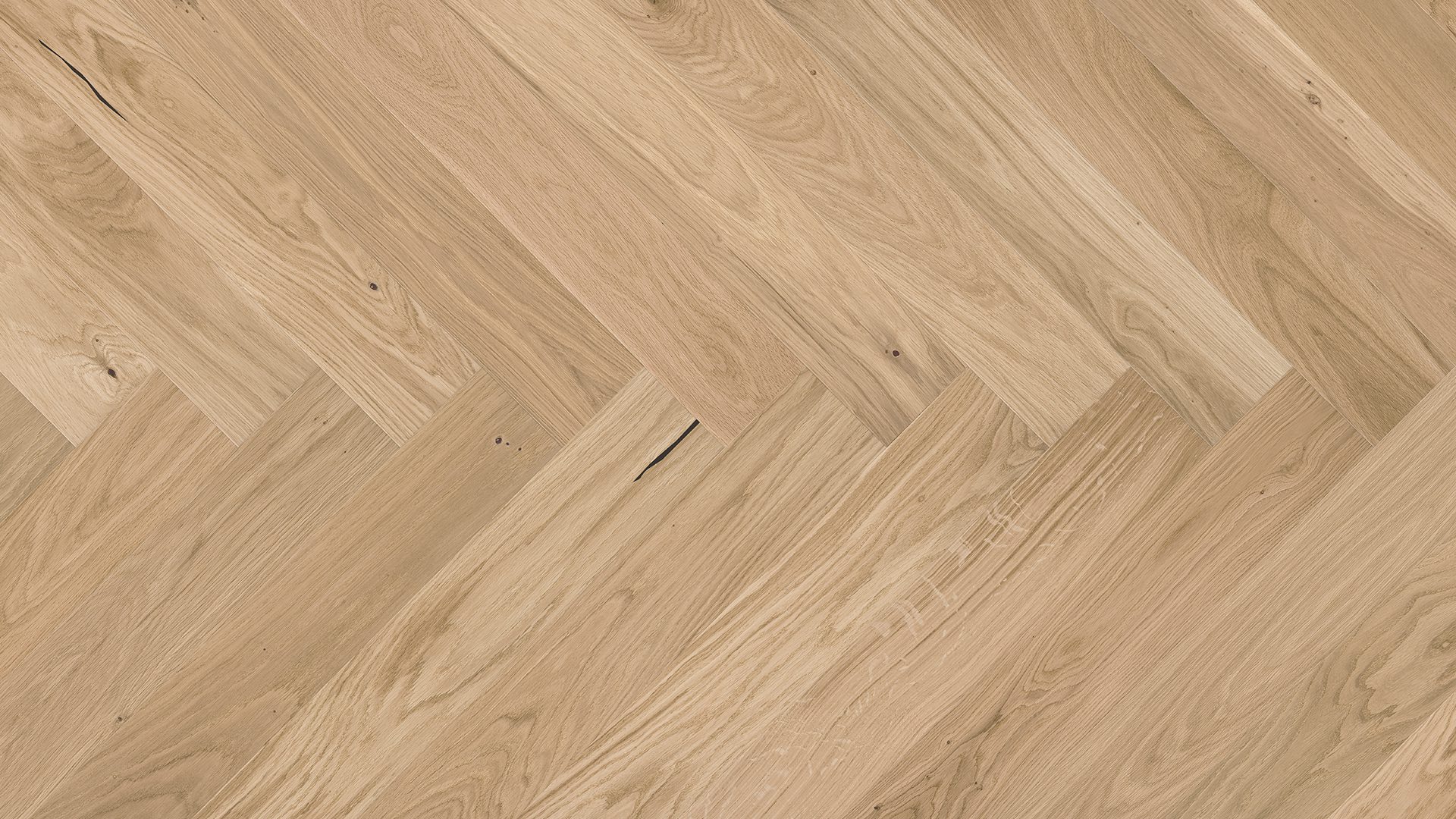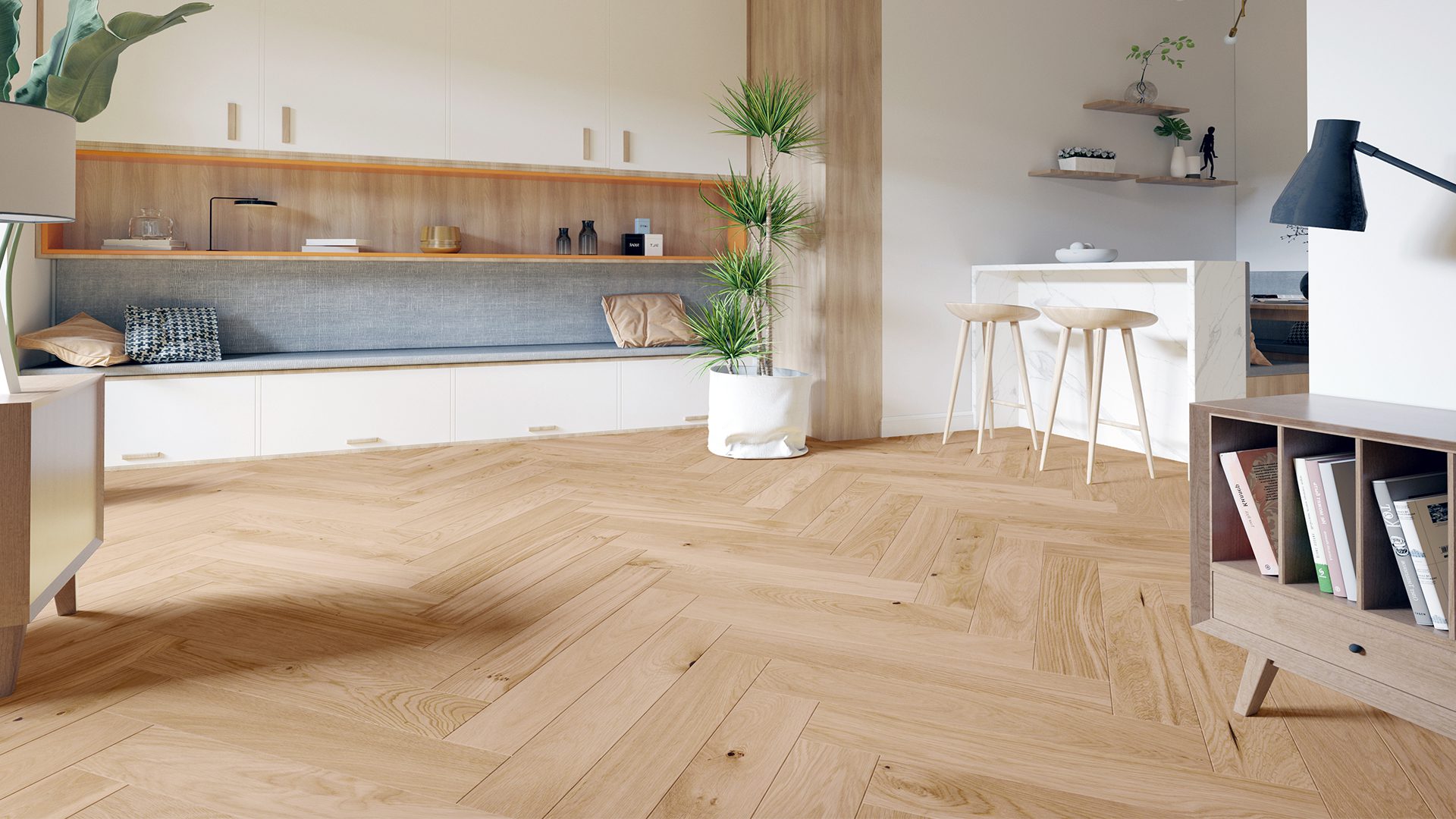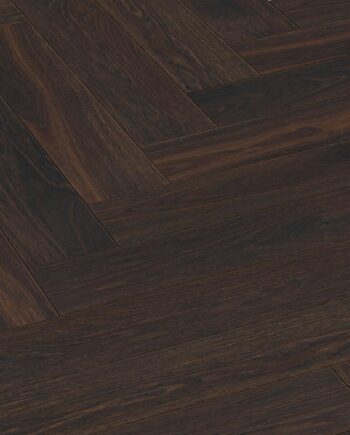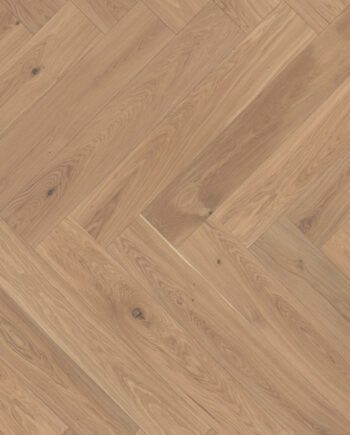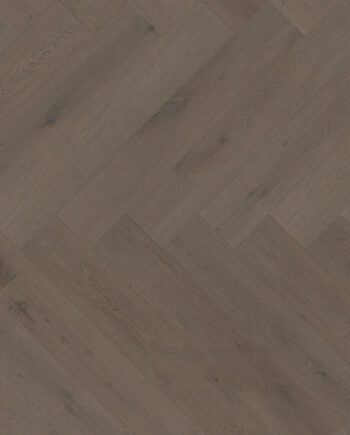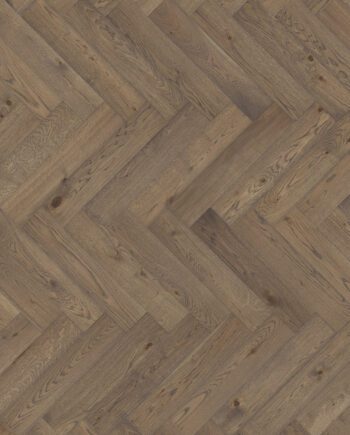Description
Herringbone flooring Oak Crema slightly Rustical Grade: Featuring a lively and slight rustic character with texture and color tone variations, as well as natural knots. Filled cracks and knots are allowed.
The total thickness of this herringbone flooring is 14 mm, with a 2.5 mm thick noble oak layer, allowing it to be sanded up to two times. The edges are micro-beveled on all four sides, emphasizing the larger format of the planks. The surface is brushed, enhancing the natural and elegant pattern of the wood. This herringbone flooring is finished with a matt lacquer, providing a surface similar in appearance to oiled finishes. The slightly Rustical grade, with filled knots, cracks, and natural tone variations, accentuates the authentic beauty of oak wood.
With a thermal resistance of approximately 0.1 m²K/W, this herringbone flooring is suitable for installation over underfloor heating, provided the installation is done correctly, and the manufacturer’s guidelines are followed. The maximum permitted surface temperature is 29 °C. However, for optimal performance, it is recommended that the surface temperature does not exceed 25 °C.
This herringbone flooring can be installed using either a floating method or by gluing it directly to the subfloor.
Floating installation of herringbone flooring is simpler and faster solution compared to glued installations. The planks lock together with a click connection, eliminating the need for full-surface gluing. For floating installation, it is important to use a proper underlay with a compression strength of at least 220 kPa. Additionally, floating installations require expansion joints between rooms, which should be covered with T-moldings.
Glued installation ensures a quieter walking sound. With glued installation, there is no need for expansion joints between rooms, allowing for a seamless transition both visually and technically. Gluing also results in lower thermal resistance, ensuring faster heat transfer, providing warmth exactly when needed.
